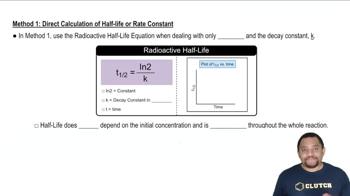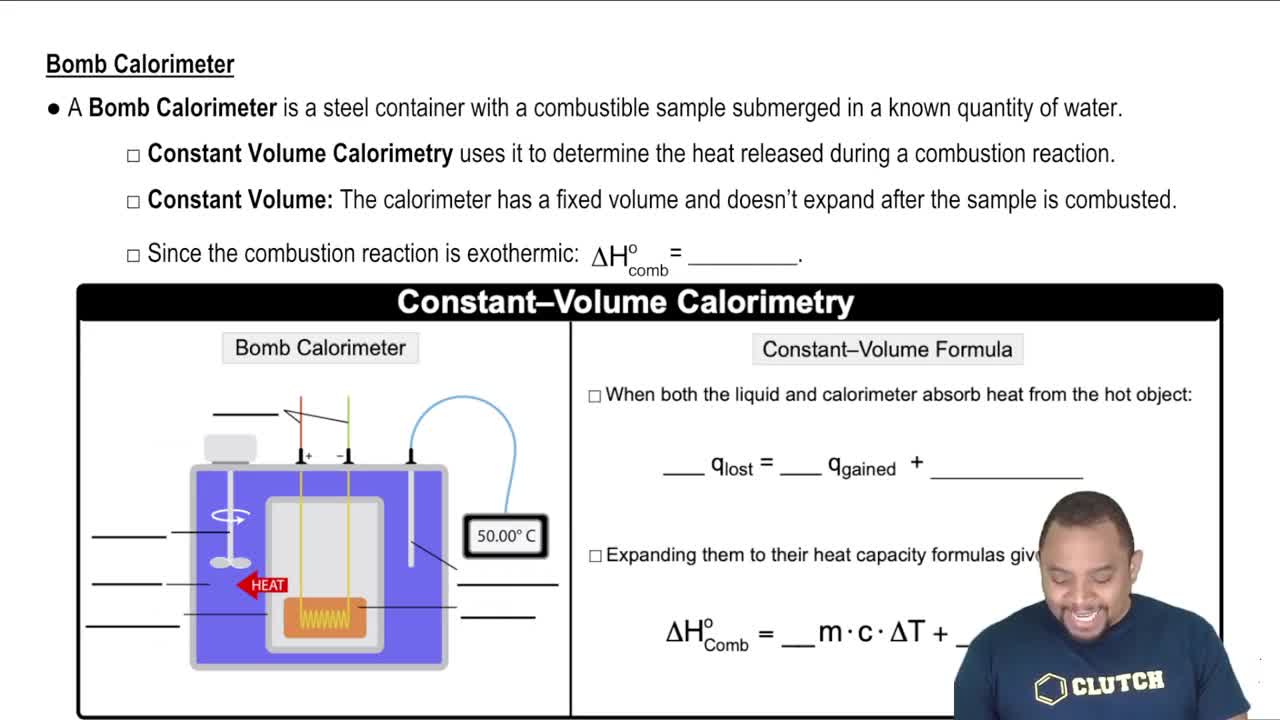Here are the essential concepts you must grasp in order to answer the question correctly.
Ideal Gas Law
The Ideal Gas Law relates the pressure, volume, temperature, and number of moles of a gas through the equation PV = nRT. This law is essential for calculating the number of moles of radon-220 in the gas sample, which is necessary for determining the amount of alpha particles emitted.
Recommended video:
Radioactive Decay and Half-Life
Radioactive decay is the process by which unstable atomic nuclei lose energy by emitting radiation. The half-life is the time required for half of the radioactive atoms in a sample to decay. Understanding half-life is crucial for calculating how many radon-220 atoms remain after a certain time, which directly affects the number of alpha particles emitted.
Recommended video:
Method 1 of Radioactive Half-Life
Volume Percent Concentration
Volume percent concentration expresses the amount of a substance in a mixture as a percentage of the total volume. In this case, knowing that radon-220 constitutes 3.55% of the gas sample allows for the calculation of the actual volume of radon-220 present, which is necessary for determining the total number of alpha particles emitted during decay.
Recommended video:
Constant-Volume Calorimetry
 Verified step by step guidance
Verified step by step guidance

